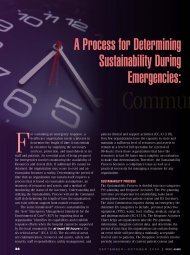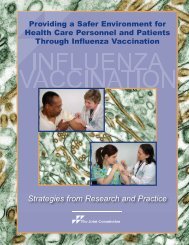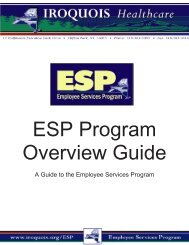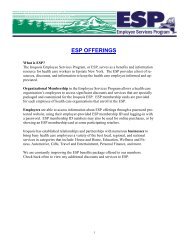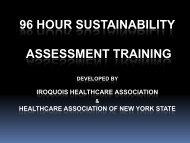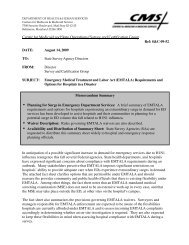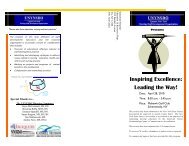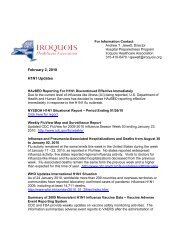NYS Public Health Legal Manual: A Guide for Judges, Attorneys ...
NYS Public Health Legal Manual: A Guide for Judges, Attorneys ...
NYS Public Health Legal Manual: A Guide for Judges, Attorneys ...
You also want an ePaper? Increase the reach of your titles
YUMPU automatically turns print PDFs into web optimized ePapers that Google loves.
NEW YORK STATE PUBLIC HEALTH LEGAL MANUAL § 1.60<br />
including directly observed therapy to treat the disease . . . .”]. Specific<br />
diseases: PHL § 2303(1) [local health officers may require any person<br />
with communicable venereal disease “to submit to such treatment or isolation,<br />
or both, as may be necessary to terminate such communicable<br />
state”]. • New York City: <strong>Health</strong> Code [24 RCNY] § 11.21(d)(2) and (3)<br />
[Commissioner may seek court order requiring a person with active tuberculosis<br />
“to complete an appropriate prescribed course of medication <strong>for</strong><br />
tuberculosis” or, if noncompliant, “to follow a course of directly observed<br />
therapy”].<br />
Commentary<br />
Effective control of communicable diseases may require that<br />
persons be subject to mandatory examination and treatment. The<br />
<strong>Public</strong> <strong>Health</strong> Law authorizes examination and treatment obliquely<br />
[§§ 2100(1): “proper and vigilant medical inspection”; 2100(2)(a):<br />
“care”]. The more contemporary New York City <strong>Health</strong> Code<br />
authorizes both examination and treatment directly, with the only<br />
requirement being that the person, upon request, be given “an<br />
opportunity to be heard.” <strong>Health</strong> Code [24 RCNY] § 11.23(k). The<br />
<strong>Public</strong> <strong>Health</strong> Law addresses these areas with more specificity only<br />
when dealing with individual conditions such as tuberculosis and<br />
venereal disease.<br />
[1.60] B. Constitutional Restraints: Examinations<br />
The Fourth Amendment to the United States Constitution protects the<br />
right of people “to be secure in their persons, houses, papers and effects,<br />
against unreasonable searches and seizures” and requires that no warrants<br />
may issue except “upon probable cause.” See also N.Y. Const., Art. I, § 12<br />
[same]. Intrusions into the human body are “searches” governed by the<br />
Fourth Amendment. See People v. More, 97 N.Y.2d 209, 212-13 (2002)<br />
[body cavity search]; Patchogue-Med<strong>for</strong>d Congress of Teachers v. Board<br />
of Education, 70 N.Y.2d 57 (1987) [urine test]; Nicholas v. Goord, 430<br />
F.3d 652 (2d Cir. 2005) [DNA test—blood test or cheek swab]. See, in<br />
general, Schmerber v. Cali<strong>for</strong>nia, 384 U.S. 757 (1966).<br />
The touchstone of the Fourth Amendment is reasonableness, and the<br />
reasonableness of a search is determined by “assessing, on the one hand,<br />
29




